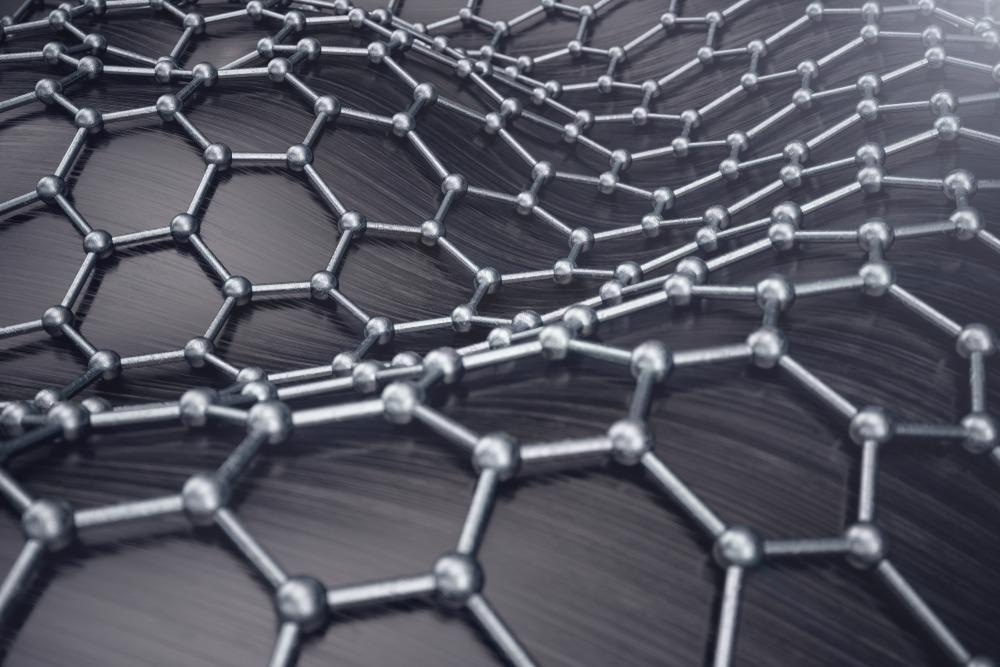It is a challenge to fabricate foldable supercapacitors with functionalized power storage electrode materials that provide good density, power output, and prolonged durability without cell deformation. Researchers have presented a novel g-C3N4.7/N-doped graphene nanocomposite electrode material in Journal of Energy Storage that exhibits strong charge transfer properties by lowering interfacial resistance.

Study: N-doped graphene modulated N-rich carbon nitride realizing a promising all-solid-state flexible supercapacitor. Image Credit: Rost9/Shutterstock.com
Need for High-Energy Storage Devices
The much-anticipated sustainable contemporary energy framework has been established, and serious efforts have been made to fulfill the demands of present power use. Stretchable energy storage systems, such as elastic cells, supercapacitors (SCs), battery storage, and portable or foldable electronics with low mass and volume in healthcare and electronics, are greatly desired in this space.
Why are Flexible Superconductors Preferred?
Compared to batteries, flexible SCs with unique properties like high energy and power density, speedy charging-discharging capabilities, high durability, reduced heat production, and ease of manufacture have garnered a lot of interest.
However, there are several challenges in the fabrication of flexible SCs, including the low energy density and poor cycling stability, which limit their use in day-to-day implementations, and the lack of large-scale technologies for manufacturing an agile SCs device with exceptional tensile strength.
Utilizing Carbon as an Electrode Material
Several carbon materials, including biochar, carbon nanotubes, carbon fibers, graphite, graphitic carbon nitride (g-C3N4), and others, have been investigated as lightweight foldable electric double-layer capacitor (EDLC) electrodes, a form of SC. Among them, graphene and g-C3N4 have emerged as the most promising stretchable electrode materials due to specific benefits.
Advantages of Graphitic Carbon Nitride
Owing to the high quantities of probable N-doping in g-C3N4, it is regarded as an excellent electrode material, allowing for higher electronegativity and ample electron supply. Its strong graphitization and electrical properties increase space electron transmission and enable a huge proportion of reactive chemical active ions to participate in pseudo-super capacitive charge transfer.
Graphene and g-C3N4 do, however, have a low capacitor voltage when used as a solo EDLC substance. This poor charge storage activity is attributed to the aggregation of ultrathin graphene layers as a result of dense layering, whereas the fundamental disadvantage of g-C3N4 is its low surface energy and inactive substrate.
Modifications for Enhancement of Properties
Attempts such as bioconjugation with heteroatoms, establishing sub-nanopores, accumulating other activated carbon to graphene sheets, and entanglement of EDLC to pseudocapacitance capacitor substances have been made to mitigate the layering potential and eliminate the uselessness of carbonaceous materials.
However, almost all of these substances are still found to have poor specific capacitance and power efficiency as separate EDLC electrodes and low-capacity retention (renewability). No combination of them is yet to be employed in flexible SCs.
According to the newest research, a composite made of graphene and g-C3N4 materials can exhibit significantly better flexible SC efficiency when nitrogen molecules are inserted before the particular carbonic domain and are projected to induce pseudocapacitance (PC) due to the additional nitrogen.
Research Findings
The vermicular rope-like N-rich graphitic carbon nitride nanocrystals with multi-channeled holes were created using a two-step synthetic approach. XRD examination revealed that all specimens exhibited a comparable strong peak corresponding to the (002) reflective axis, suggesting that they were all pure graphitic. These findings revealed that g-C3N4.7 was effectively coated over 2D-N-doped graphene to form a g-C3N4.7/N-doped graphene hybrid.
The one-dimensional topological properties of the NCN sample were illustrated by transmission electron microscopy (TEM) image analysis, which revealed a macroporous multichannel tubular structure encircled by thin CN walls. On the interface of the as-prepared NGS, the TEM picture revealed an excellent few-layer thick lamellar/sheet structure and a rich interconnecting wrinkling structure.
The multi-layered framework was developed by stacking N-doped graphene sheets that were uninterrupted, opaque, and twisted together. Owing to the mesoporous structure of NCN, the NCN/NGS composite structure may give a large surface area while also improving surface porosity.
The Nyquist plots showed that NCN/NGS had a very poor bulk resistance (Rb, 1.28 cm2) and electrode-electrolyte charge-transfer impedance (Rct, 2.22 cm2) when contrasted to NCN, BCN, and NGS substrates. PVDF is an electrolytic integrated separator incorporating PVDF that resists the contact between electrode material and electrolyte, resulting in high bulk and electrical resistivity.
The better performance of the adaptable all-solid-state SC is attributed to the well-assembled topography-oriented structures of the g-C3N4.7/N-doped graphene hybrid.
The well-defined morphology-oriented NCN/NGS design is a suitable electrochemical cell material for novel high-performance supercapacitors.
Reference
Antil, B. et. al. (2022) N-doped graphene modulated N-rich carbon nitride realizing a promising all-solid-state flexible supercapacitor. Journal of Energy Storage, Volume 52. 104731. Available at: https://doi.org/10.1016/j.est.2022.104731
Disclaimer: The views expressed here are those of the author expressed in their private capacity and do not necessarily represent the views of AZoM.com Limited T/A AZoNetwork the owner and operator of this website. This disclaimer forms part of the Terms and conditions of use of this website.